The purpose of horror fiction is not only to explore taboo lands but to confirm our own good feelings about the status quo by showing us extravagant visions of what the alternative might be. – Stephen King
WHEN I WAS 11 years old, I woke up one night in my father’s house, in the little bedroom I shared with my brother. The small, black & white television on the bureau was showing Night of the Living Dead. I had fallen asleep with the television on and now a zombie was chasing a blonde lady through a graveyard. I was paralyzed. I don’t remember much more than sinking under the quilt and trying to block out the sound.
My mother was driven to the edge of apoplexy and back by my fascination with all things bizarre. Any contact with the “weirdies” (my mother’s name for scary movies) and I would lose my 11-year-old cool. Commercials for The Shining, Suspiria and virtually any other horror movie, as well as the site of Balok, the scary alien at the end of the original Star Trek credits, sent me screaming to Mommy.
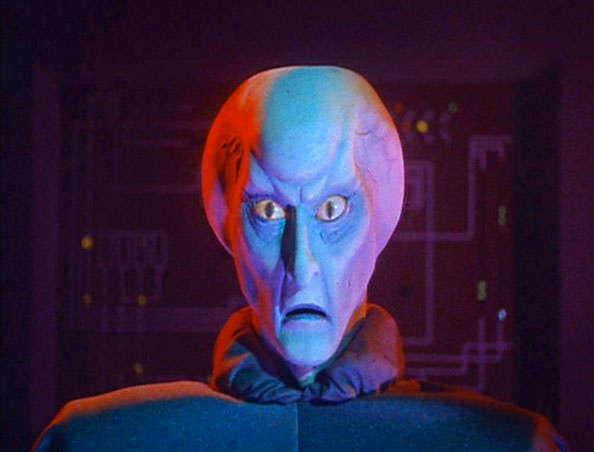
Balok, designed by Wah Ming Chang, Chinese-American sculptor and artist responsible for various costumes, creatures and gadgets from the original Star Trek series.
Horror fans are a special breed. They’ll watch almost anything in the hope of finding a gem like The Descent or Let The Right One In, or of discovering the next Ringu before it becomes a mainstream phenomenon. There are gourmands, of course, who will devour anything and everything no matter how rotten. Gore is marked high with that type of fan. While bloodletting has a literary and theatrical tradition dating back to ancient Greece, many horror audiences have become so inured to it that its effect is lost. Instead of recoiling in horror, the gourmand (gore-mand?) seeks it out. We could philosophize all day about why films like Cannibal Holocaust and Hostel fetishize violence and why a certain kind of horror fan loves those movies, but for now let’s just say that when used judiciously (as in Takashi Miike’s very effective Audition), a graphic moment can set an audience on edge. The overuse of blood and onscreen violence has the opposite effect.
Stephen King in Danse Macabre, his treatise on “scary movies and stuff”, divides “scary” into three sub-categories: 1) terror, 2) horror, and 3) revulsion. The Wiki entry on King’s book lays it out clearly: “Citing many examples, [King] defines ‘terror’ as the suspenseful moment…before the actual monster is revealed. ‘Horror’ is that moment at which one sees the creature/aberration” and “revulsion” which King calls, “going for the gross out.”
I recognize terror as the finest emotion … and so I will try to terrorize the reader. But if I find that I cannot terrify, I will try to horrify, and if I find that I cannot horrify, I’ll go for the gross-out. I’m not proud. – Stephen King
A lot of the best horror is the result of renegade filmmaking – done on the cheap, independently produced, and shot in a few weeks. The acting can be stiff, the dialogue uneven, the special effects limited. You might catch unintentionally funny moments or criticize performances. But these independent films allow the director to fulfill a vision. Hollywood’s recent spate of horror remakes have generally been lame, lacking in atmosphere, or missing a key factor which gave the original its success; big Hollywood horror is often too slick, too clean, and too lacking in style. John Landis said, “The new versions of The Texas Chainsaw Massacre and The Last House on the Left looked like shampoo commercials.” Sometimes a filmmaker’s limitation produces a moment of genius which might not have otherwise existed on a bigger budget and with the unnecessary input of film executives with survey results.
In my year-long series, My Year of Horror, I invite you to make your way through the films recommended by horror buffs: the movies that bring a wicked gleam to the eye, that are essential viewing, have influenced other films and filmmakers or are great examples of their sub-genres. And there are indeed sub-genres in horror: hauntings, slashers, serial killers, conspiracies, stalkers, psychological horror, monsters & demons (and the excruciatingly derivative exorcism category). Zombies and vampires have, unfortunately, become genres all their own. There are tiresome and terrible films in all these categories and I’ll share my journal of dread with you once per month.
You’ll also find an extraordinary selection of film recommendations on my friend Dan’s Facebook group. Dan is one of my besties (not beasties, BESTIES) and has seen more horror films than anyone I know. He takes a month out of every year to recommend a different film every day for his October Horror DIEt 2012.
My 13 Fundamentals will get you started, though, on the films you must see if you are going to educate yourself on the best of the best in horror. You should see these movies before you see all the crappy derivatives you will undoubtedly be exposed to if you are a horror fan. The 13 Fundamentals have been chosen either for a unique premise, an effect on the audience, excellence of storytelling, character development, superior cinematic technique or social impact. I have not put any on this list which I don’t think of as exceptional in some way. That doesn’t mean they are all good films – most are, but not all. There are even some crappy bits in the choicest of them, but they all do what a horror film needs to do.
Let the debate begin!
~~~
13. Halloween & Friday the 13th bear significant similarities and their dual influence helped usher in the glut of slasher films in the 80’s.
In addition to their similar titles, which point to the scariest days on the American calendar, both have as their villain a mysterious presence who murders hapless teenagers. Both were filmed on low budgets, feature high body counts and long suspense sequences, and make use of unique musical and/or sound scores. (Wes Craven’s Scream took an ironic look at the tropes nailed into place by these two films.) Compared to Friday’s beheadings, axes to the face and arrows through the neck, [***SPOILER ALERT*** watch for young Kevin Bacon on that one] Halloween is a model of restraint. What both of these films do successfully is build an atmosphere of dread.
The scores of both films are an effective vessel, if not the blood itself. Halloween’s simple theme, with slowly rising and falling base chords under a repetitive upper-register motif, is composed in the atypical 5/4 time and subconsciously feels off-kilter. It’s also reminiscent of Mike Oldfield’s “Tubular Bells” made infamous by The Exorcist. Friday, meanwhile, makes use of strange, repetitive breathing which echoes the killer’s inner life.
A sense of desolation and isolation pervades both films. A back-to-school, autumn setting, with its dying leaves, lonely grey skies and the approaching dead of the winter is a perfect time for murder – it also happens to be the season for the titular holiday of Halloween. The stillness of the woods and a placid, nearby lake give Friday the 13th an eerie calm in its abandoned campground setting.
Both films start with murder then flash forward to the present where the stories begin. While we never quite care about the characters in Friday the 13th as we do about Laurie Strode (played with vulnerable simplicity by Jamie Lee Curtis) in Halloween, both films make us fear for our protagonists and their friends. Friday’s first murder in present time, graphically depicted, is only the beginning of what we anticipate will be a long string of violent deaths. Halloween takes its time, starting with the escape of a mental patient and the pursuit by his doctor (Donald Pleasance, who makes some wonderfully hammy dialogue sound positively Shakespearean.) Once we learn that Michael Myers, the murderer from the prologue, has returned to his hometown, we catch repeated glimpses of him in that bizarre, pale, William Shatner mask, watching and waiting for a moment to strike.
What makes both of these films work is suspense. In Friday it is built by the anticipation of more horrors, each worse than the one before. The unseen villain (not Jason Voorhees, by the way. Jason doesn’t make his murderous, adult appearance until the sequel) gives us shock after gory shock, raising the stakes with each death until the extended chase sequence at the film’s climax. In Halloween, the slow-moving, nearly comatose Michael Myers as the tortoise to Jamie Lee’s hare nearly causes convulsions. Laurie can’t seem to run fast enough even though Michael walks slower than a tourist in Manhattan. It makes your muscles ache.
Opposite sides of the same coin, both are incredibly effective and look like Bergman compared to today’s low-budget horror flicks.
12. The Texas Chainsaw Massacre is a superb example of low-budget film-making. Tobe Hooper’s shocker, released in 1974, has surprisingly little bloodletting onscreen. Though the film was banned in several countries, Hooper was smart enough to know that too much violence would keep the film from general distribution. Torturous suspense dominates, not gore. The film was marketed as a true story but is completely fictitious, inspired by the crimes of serial killer Ed Gein (also, strangely, the inspiration for Psycho.)
Five teenagers taking a trip by van stumble upon what seems to be a deserted farmhouse. It is not, of course, deserted but belongs to a family of derelicts including “Leatherface,” the chainsaw wielding murderer of the title. It’s a basic set-up that we have seen countless times since. What Hooper manages to do is set the bar so high on our fear of the unknown, beginning ingeniously with the title, that we spend most of the film waiting for the horrible events. Some pretty grisly things do happen but we barely see any of it. We hear the chainsaw, we see the ungodly décor of the farmhouse (an array of bones and skins, some of which may be human), but when the first murder occurs, shot from the opposite end of a long hallway, there is nary a drop of blood. It’s an elegantly-composed horror, so shocking and stark that we are stunned into silence.
The tropes of this movie – teens on a car trip, ominous gas station attendant, bizarre art direction in an isolated enclave, the monstrous bemasked killer, grisly weapons – seem old hat now but came together in a deliberate combination through Hooper. The slasher genre would not break into commercial cinema until Halloween and Friday the 13th later in the decade but Chainsaw, with its unbearable subject matter, packs a wallop.
11. A Nightmare on Elm Street – Is there anyone who hasn’t heard the old wives’ tale that if you die in your dream you will never wake? Wes Craven’s scariest film introduced a villain whose raison d’etre is to prove that very point, and Nightmare generates its scares by using one of our most basic, human needs against us.
In Craven’s vision, sleep is the doorway to hell, and Freddy Kruger is the boogeyman who presides over it. Kruger, the deceased child-killer (and hinted pedophile) who haunts the dreams of the teenagers of Elm Street, is a staggering combination of childhood and adult fears. What kid hasn’t been afraid of the boogeyman? What kid has not been afraid of the dark? Who, even as an adult, has not suffered an unbearable nightmare? And what parents do not want to protect their children from evil men who would harm them? Craven takes this premise a step further by adding a central mystery which places blame for the boogeyman’s origin at the doorstep of every parent in the placid, unnamed suburban town that is the film’s setting. In the original film (not the campy and progressively weak string of sequels) Kruger is basically a spectre. Few glimpses of his burned face and razor-knife glove leave him in the dark long enough to raise our anxiety. His few, wickedly funny lines don’t break the tension, they gleefully strum it. Despite some crummy performances and some accidentally funny dialogue, the fright quotient is high.
Craven’s use of gore is extreme but well-earned. His nightmare landscapes go from eerie to comic and back. Nightmare also has a satisfying climax (unfortunately dispensed with in the unwatchable remake) where our heroine takes matters into her own hands. This is a movie with a simple premise stretched in every possible direction. One wonders why no one had thought of it before. It’s on the list because there was nothing else remotely like it when it was made and, having seen it with novices, it still scares the bejeebus out of you.
10. Jaws is more of a suspenseful adventure than a horror flick but earns a place on this list for having terrified a generation of beach-goers.
By now, everyone knows the premise: monster shark attacks summer beach community. Director Steven Spielberg mostly gives us stark detachment when it comes to the horror, and only glimpses of the shark early on, but his characters are fully realized and the movie is uplifted by a sense of irony. We are given a setting populated with people we recognize, a loving family at the center. Performances by Roy Scheider, Richard Dreyfuss, and especially Robert Shaw as a gruff Ahab-like shark hunter, are excellent. The climactic showdown suffers a bit from crude puppetry but the dialogue is never dull. Sheriff Brody’s reaction when he first sees the shark is one of those oft-repeated lines that makes you smile as much as nod in agreement: “You’re gonna need a bigger boat.” And how!
This movie did some serious damage to the reputations of our be-finned friends but, let’s face it, sharks are scary. If you’ve seen the slow-mo footage of great white sharks hunting seals on BBC’s Planet Earth, you know author Peter Benchley made the right choice in his aquatic terrorist.
9. Rosemary’s Baby belongs in the category of conspiracy thriller with The Stepford Wives (also penned by Ira Levin), Coma and Invasion of the Body Snatchers. I had a difficult time making the choice between Rosemary’s Baby and the 1978 remake of Body Snatchers because the latter is also superb. But the former is a more influential film overall and some of its paranoia-inducting cinematic techniques are evident in Body Snatchers.
Mia Farrow and John Cassavetes as Rosemary and Guy Woodhouse move into “The Bramford,” an old, Gothic Revival apartment building in Manhattan (Roman Polanski cast NYC’s The Dakota as “The Bramford” and makes the building feel like an additional character.)
Peculiar neighbors and mysterious goings-on soon convince Rosemary that she is the chosen sacrifice for something she cannot name even as her husband, her doctor and her neighbors struggle to keep her from going off the deep end. Ruth Gordon as Minnie Castevet, in an Oscar-winning performance you must see to believe, is her pushy but charming neighbor who may not be the no-nonsense mother-figure she seems to be.
Satirical and frightening, this movie takes you on an emotional ride. The musical score is as frenzied as it is upsetting. Claustrophobic close-ups and shifting camera angles make The Dakota feel like The Cabinet of Dr. Caligari. When Rosemary becomes pregnant and her paranoia grows ever more frantic, Polanski’s camera goes mad until the final, climactic scene, when Rosemary discovers the truth is even worse than she could imagine.
8. Psycho is most famous for the endlessly analyzed shower scene, nearly ruined by decades of pop-culture exposure. At the time of its release, however, it made showering an act of bravery. To the horror fan bent on Grand Guignol set pieces, this movie will seem dull with its careful plotting, slow pace, and technical precision, but Psycho creates an unrelenting sense of unease.
Psycho is about dis-ease, arrested development and isolation. Norman Bates, frozen in adolescence by the icy power of his mother’s domination, is unable to break free. In one of the best scenes in all of horror history, we see hints of his charm and sweetness when Marion Craine who, having stolen $10,000 from her job, arrives one rainy night at the Bates Motel. Crane and Bates are brought expertly to life by Janet Leigh (mother of scream queen Jamie Lee Curtis who would make a splash 18 years later in Halloween) and Anthony Perkins. When a horror film bothers to develop its characters this well, the suspense is that much more gripping because we care.
**SPOILER ALERT**
Don’t read this if you’re one of the few who hasn’t seen the film! One of the crucial elements of the film is the death of the star halfway through the movie. Screenwriter Robert Bloch must get credit for this thrilling device but it is Hitchcock’s showmanship including his casting of then-star Janet Leigh. The film is so off-kilter that she is killed just as we grow intrigued by her story. It’s hard to understand how shocking this would have been to an audience who didn’t know this at the time. Her death shifts our expectation in such a way that we are led to believe that in the world of this film, no one is safe.
7. The Innocents – As ghosts stories go, I don’t know if there has been one adapted as many times as Henry James’ The Turn of the Screw. It’s been seen on stage, television, cinema – even at the opera in a masterwork by Benjamin Britten. But Jack Clayton’s direction of the William Archibald/Truman Capote script (adapted from Archibald’s play) ratchets up the ambiguity, psycho-sexual tension and paranoia to near-hysterical levels. It’s a movie about the spoiling of innocence and about innocents haunted by corruption.
Deborah Kerr is Miss Giddens, a Victorian-era governess engaged to care for Miles and Flora, a brother and sister who have been effectively abandoned by their uncle. Miss Giddens finds a confidante in housekeeper Mrs. Grose when the children’s strange behavior and the appearances of some shadowy figures awaken her imagination.
With its grand old estate, peculiar children and hysterical mother-figure this film is a precursor to The Others, which I also recommend. Following the success of The Sixth Sense, horror movies seemed bent on forcing a twist into the end. The Innocents substitutes a literate psychological perspective and an agonizing climax for a superficial twist, making it a more mature film than both of those.
Clayton’s techniques underline the “boo” moments without the tiresome, ubiquitous booms which have accompanied jump-scares in every horror movie and every trailer for every horror movie in the past decade. I’d rather shiver than call for a defibrillator. (The Lady in Black, another potentially excellent ghost story, suffered from this conundrum.) Enough with the screechy noises already!! Jack Clayton’s direction of The Innocents will remind you of how a filmmaker can make your skin crawl.
6. Seven – The Seven Deadly Sins had already worked their share of overtime as muses for art, literature, theatre and novels by the time Seven was released in 1995. (Hard to believe it is almost 20 years old at this point.) But David Fincher and his team, including writer Andrew Kevin Walker, continually surprise us, and Fincher offers such a unique visual perspective which influenced the look and style of horror for the next decade. This is no lazy gorefest; it’s a dossier on human need and depravity.
Morgan Freeman is a detective in an unnamed city on the verge of retiring when explosive rookie Brad Pitt joins the force. Freeman, as Somerset, is slow, methodical and professional while Pitt as Mills is at the mercy of his own impulses. When they begin an investigation into a series of interwoven murders referencing The Seven Deadly Sins, Somerset find himself unable to leave this conundrum in Mills’ unsteady hands. Their relationship forms the emotional core of the film and Mills’ wife, a sweet and sad Gwyneth Paltrow, is a bridge between them. Each scene is concise, moving toward a bleak finale while revealing more and more about each of them.
Set in an unnamed, rain-soaked city (all that rain calls to mind The Deluge), each frame shrouded in a sickly green, with crime scenes resembling the most grotesque of Joel-Peter Witkin photographs, this film continues its influence on horror movies. Saw and Hostel have borrowed their visual style from Seven: specifically, the green pallor which has dominated horror since. The opening sequence, which lays out the world of film, will seem familiar because so many have adopted the techniques of jumpy visuals and nerve-jangling sound and music. With little onscreen violence, Seven depicts the grisly tableaus of John Doe’s victims. Moody, dire, relentless and full of foreboding, Seven is a comment on a world in which mankind has lost its humanity.
5. The Shining – Kubrick has been criticized for cutting Stephen King’s excellent novel to shreds, extracting only the parts that suited him, and making nonsense of King’s straightforward plot. King makes no bones about his unhappiness with the final product. There have been excellent (and more faithful) adaptations of King’s work: Carrie, Salem’s Lot, Misery, Dolores Claiborne. Kubrick’s The Shining, however, stands apart from the novel but is equally terrifying – an original work of art inspired by King.
Kubrick’s film is a twisted journey through isolation, madness and a supernatural (or is it?) world with its own rules. We are transported from one nightmare to another, witnessing the story from several points of view at once. Nicholson’s performance is probably the best of his career, full of rage and sadism, freakily funny at times — that is until your laughter catches in your throat. The banal first act, reminiscent of Hitchcock’s Psycho, is merely Kubrick’s set-up for a mysterious second act and a supremely-tense final reel. No image of horror can be worse than the sight of an ax-wielding father chasing his own son through a midnight snowfall.
Danny Lloyd playing the son (also named Danny) is the last word in strange, movie children – a precursor to the kids in The Sixth Sense, The Others, Orphan and countless other flicks. Shelley Duvall’s bathroom showdown with Jack as he chops down the door is one of her great scenes. There is plenty to criticize in this film – occasionally weird dialogue, sometimes deadpan delivery and long seemingly dull bits – but those oddities are what hit you subconsciously, like Kubrick’s camera angles. The musical score is exceptional – often terrifying enough without the images. Special mention should also be made of Scatman Crothers. His brief scenes early in the film are some of the best.
The Shining is debated among horror fans – especially fans of the King novel (of which I am one) – but it stands on its own as a work of art. Is there anything as creepy as those identically dressed, strange-looking, twin sisters beckoning in their clear, English accents, “Come and play with us, Danny??” Quite literally, from its opening shot through to its final image, The Shining unsettles you.
And if you haven’t seen the original theatrical teaser for The Shining, you should watch it before you watch the film.
4. Alien – Ridley Scott’s space-horror masterpiece is no work of science fiction. It is a slasher movie in space. The sci-fi setting enabled Scott and his team to layer in an exaggerated visual style that has become ubiquitous. The Alien, designed by freakout-art master H.R. Geiger, is a grotesquely beautiful piece of movie-craft. Ian Holm, as science officer Ash, reminds the crew, “You still don’t understand what you’re dealing with, do you? Perfect organism. Its structural perfection is matched only by its hostility.” And there you have it; a movie monster whose cycle through the evolutionary process makes it nearly impossible to kill.
Trapped with it on a mining vessel, the working-class types who populate the film are left to their ingenuity, battling not only the alien but a traitor in their ranks. A precise screenplay makes it easy for us to suspend disbelief and accept these people as blue-collar stiffs in crisis. Scott’s direction, with a documentary-like objectivism, makes us believe we are witnessing a slice of space life. We are lulled into complacency, watching the events unfold. When the shocks come, they are extreme and unsettling: the alien chest-bursting scene rightfully earned its place in film history. Alien made Sigourney Weaver a star but John Hurt, Veronica Cartwright, Tom Skerrit, Yaphet Kotto, Harry Dean Stanton and Mr. Holm all turn in exceptional performances, breathing life into the story’s dysfunctional, familial unit. The slow set-up and objective camera-work may be a challenge to contemporary audiences used to MTV-editing but this movie’s payload of shocks is ultimately rewarding.
3. Night Of The Living Dead – In George A. Romero’s world, the dead have come back to life. They’re not infected with a “virus.” They’re not angry. They have no moral judgment. They’re just coming to eat you. “My guys are DEAD,” Romero cheerfully opines. “Somebody changed the rules and they’re coming back…” The tag line of Romero’s darkly comical sequel, Dawn of the Dead, says it all: “When there’s no more room in hell, the dead walk the Earth.” Dude? Seriously? Run!!!
Romero’s low-budget masterpiece unfolds over one grim night where a half-dozen strangers must defend themselves from the ghouls of the title (the word “zombie” is never uttered.) Surrounding the farmhouse in which the stragglers take refuge, the dead stumble, careen and wander, searching for a meal. Cannibalism, one of the primal fears of western society, produces the revulsion Stephen King mentions and Romero expertly leaves a protracted zombie feast until late in the movie when he has worked us into a frenzy of anticipation. Before we get there, he incorporates elements of Lord of the Flies, examining what would happen if a bunch of strangers had to fight for their lives as an apocalypse draws upon them. Selfishness, anger, petty bickering, hysteria and even heroism are magnified under Romero’s pressurized microscope.
Romero’s casting of African-American actor Duane Jones marks the first time a black man was cast as the hero of a horror film. Jones plays Ben, who becomes the leader of this disparate, desperate band. While not unusual to see this today, it was groundbreaking in 1968, at the height of US civil rights battles and the dawn of the sexual revolution. As a result, the final, still images which play through the credits have an impact they would certainly not have had with a white actor. After years of bad imitations and two awful remakes, this flick is more horrific than you might imagine.
2. Nosferatu – When Bram Stoker’s widow got word of an unauthorized film with a strong resemblance to her husband’s seminal novel, Dracula, she filed a lawsuit. The court ruled in Madame Stoker’s favor, ordering of all copies of the film destroyed. One cut of the film, thankfully, had made its way to US soil, allowing F.W. Murnau’s ghastly-great work to survive and become a touchstone of horror filmmaking. Murnau’s expressionistic use of shadows, his conception of the vampire as a grim-faced monster, utterly unlike the romantic figure of mystery he would become under Bela Lugosi, and the dream-like eeriness of silent film all turn Nosferatu into a slow-dawning nightmare.
Max Schreck, in make-up emphasizing his tall, skinny frame and wearing prosthetic fingers longer than any fingers should be, is the vampire, Count Orlok. As played by Schreck, Orlok is a grim soul who just about “passes” in the human world – a monster instead of a playboy; his performance is masterful and the film’s images are iconic.
When Orlok boards a ship to Bremen, devouring the entire crew along the way, Schreck’s freaky-deaky emergence from his coffin is enough to set you back a few grey hairs. The beauty of the each carefully-composed shot is balanced by the creeping evil in every frame. Rogert Ebert deftly sums it up: “It doesn’t scare us, but it haunts us. It shows not that vampires can jump out of shadows, but that evil can grow there, nourished on death.” Come right in, Heebie-Jeebies!
1. The Exorcist has inspired countless second-rate imitations which all miss the vital element setting The Exorcist apart: it’s about faith. Objections to the film’s profane images and extreme language also miss that point.
In The Exorcist, a demon preys on the devout and the secular with equal vehemence. Pazuzu, the demon in question, hates God as much as it hates the human race God created and will do anything to cause pain. Voiced fanatically-well by Mercedes McCambridge, Pazuzu doesn’t just say a lot of dirty words, it says them through the mouth of a child and turns the innocent child, Regan (an uncannily mature Linda Blair), into a raging monster.
I recently shared it with a cynical friend who dismissed it as ridiculous even though he had never watched it. The eye-searing image of the defaced Virgin in the church was enough to give him pause but by the time we got to the “crucifix scene,” his face was pale and he needed to catch his breath.
Pazuzu wants suffering: in the child, in the child’s mother (played with gusto by Ellen Burstyn), in God, in the priests who come to save Regan’s soul and, because the subject is treated realistically despite the outlandish happenings, we are convinced Pazuzu wants our suffering too. Where, you ask, is God in all this? The exorcist of the title (Max von Sydow) and his assistant Father Karras (the late Jason Miller) are called on to muster all their faith to battle the forces of hell. It’s not a simple fright film – it’s a meditation on devotion.

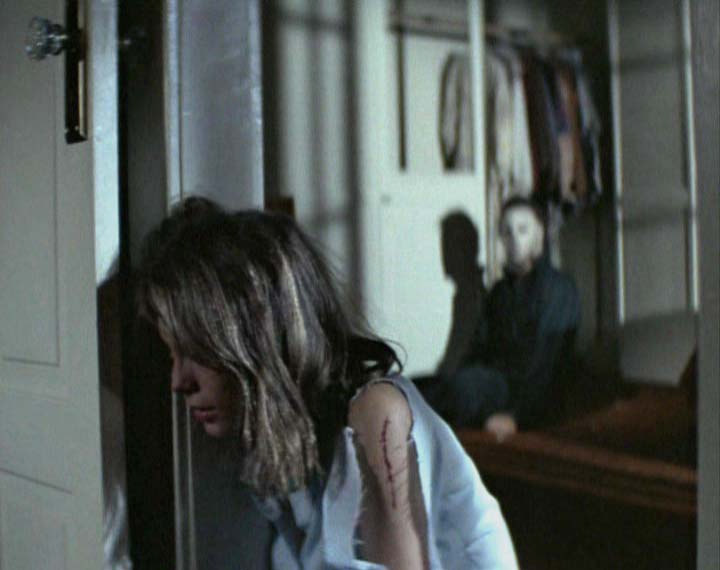
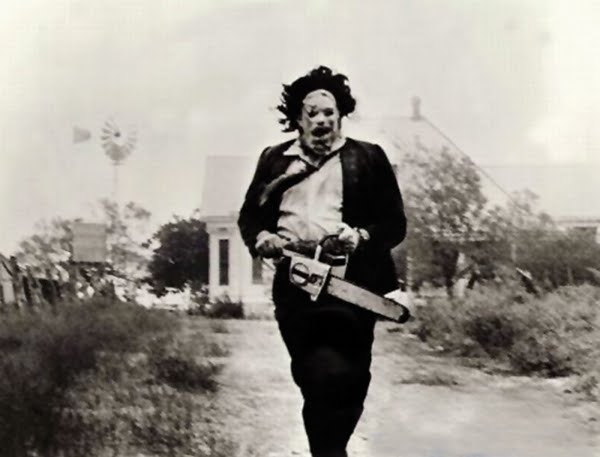
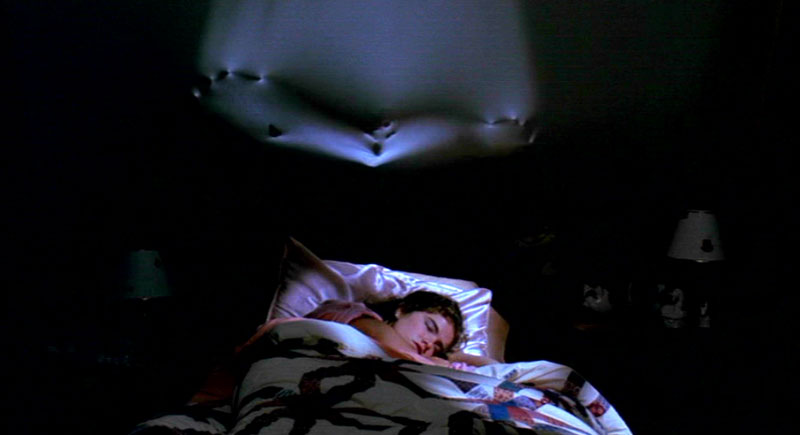
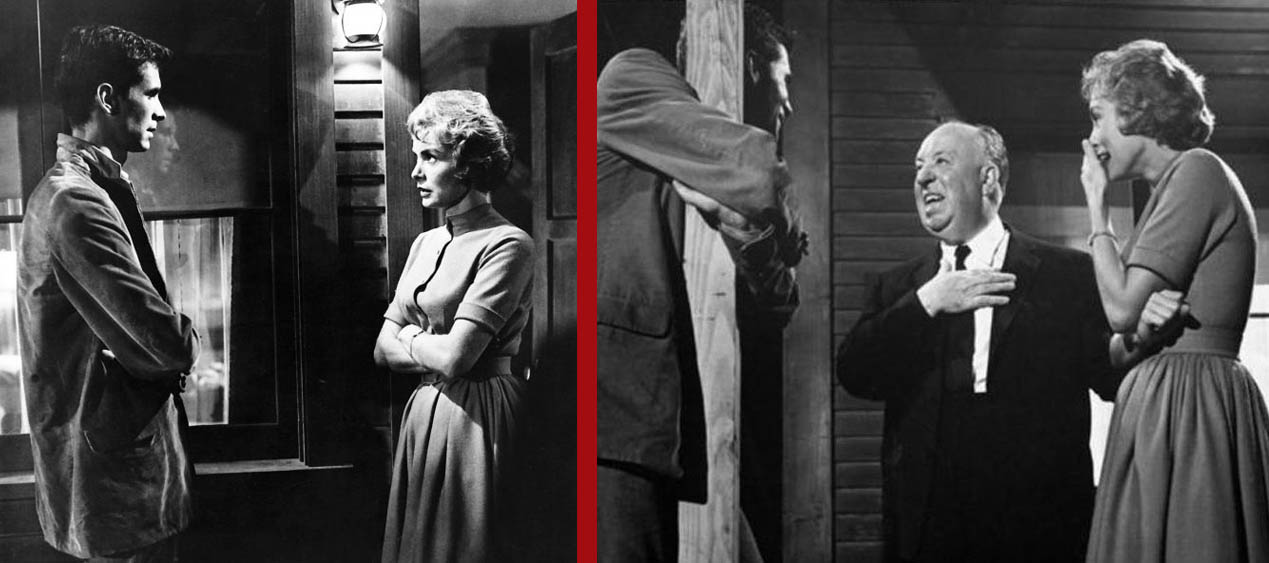
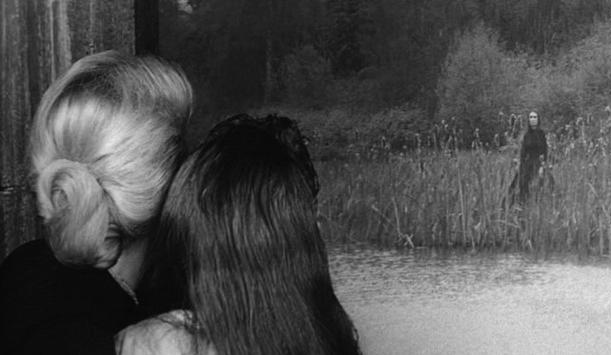
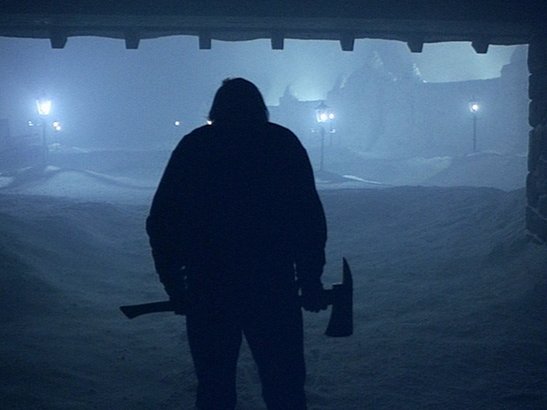
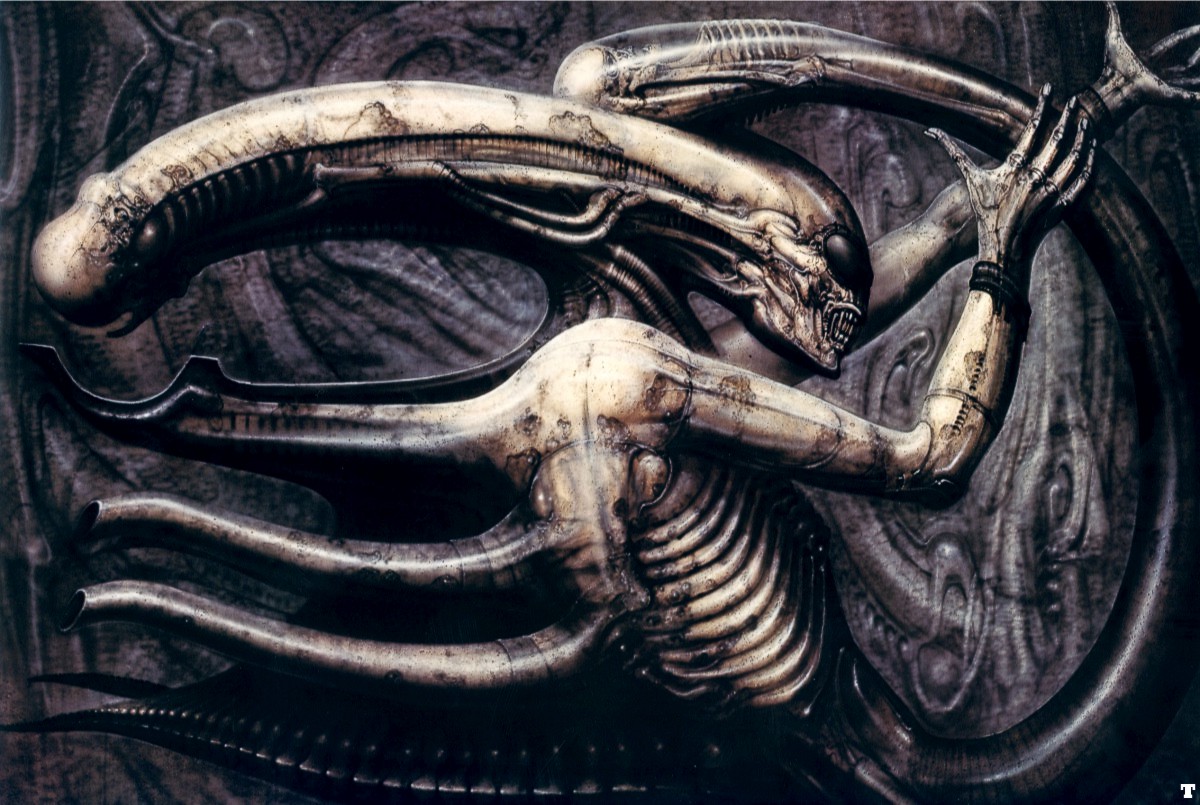
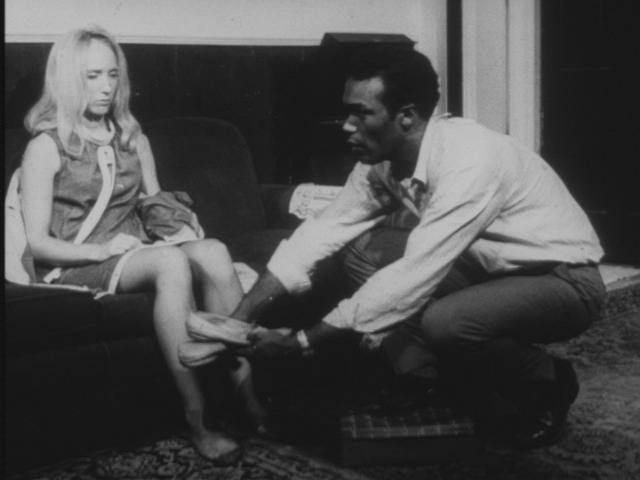
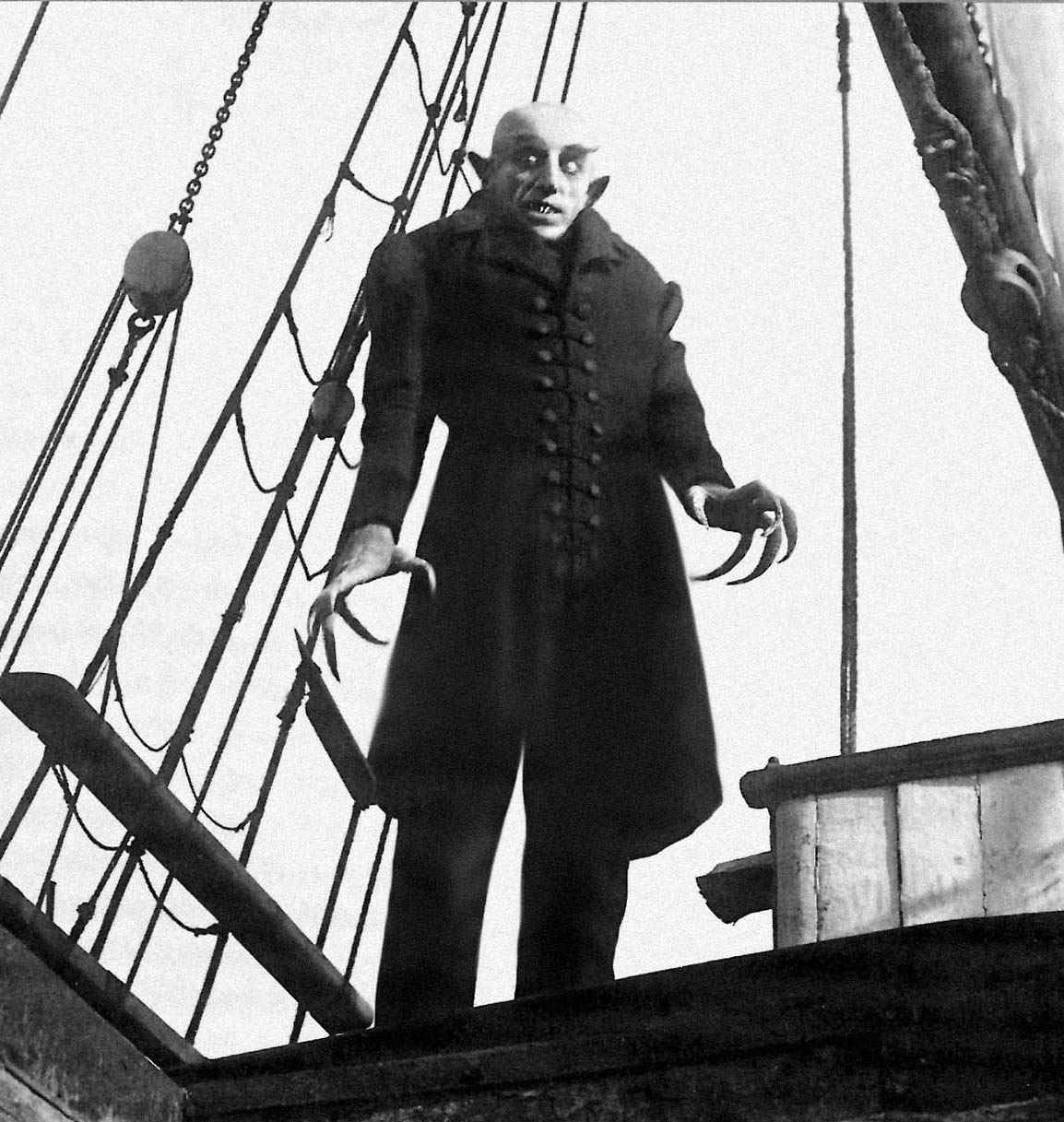
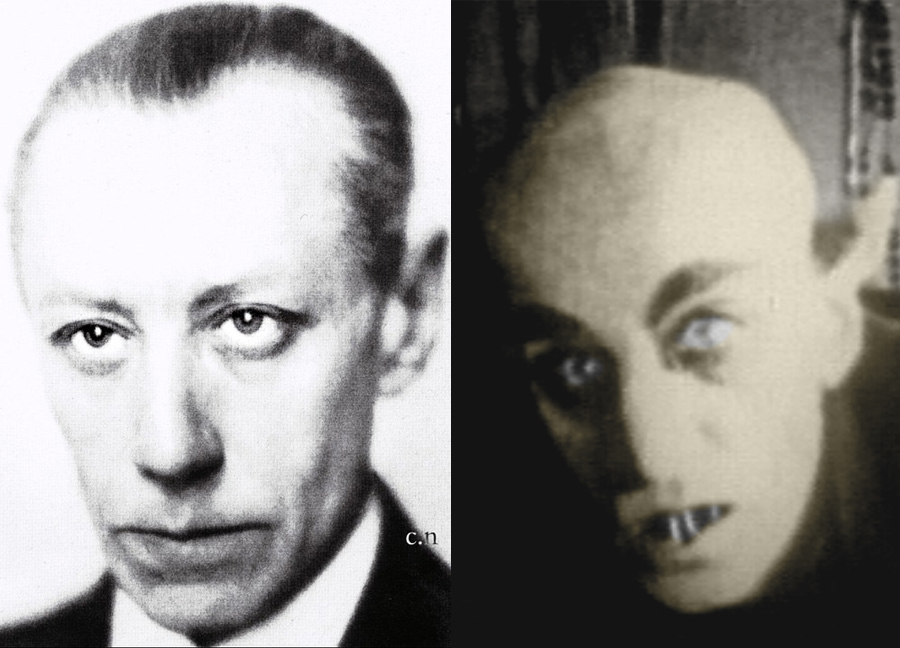



Thanks Tom, I’m gonna check out the innocents.
It’s worth your patience, John Summers.
When you say worth my patience I assume you mean the movie’s on the slow side? I don’t mind that, I prefer creepy with atmosphere over big effects. Did you see Insidious? It wasn’t half bad considering it’s a new Hollywood movie. It had perhaps to many jump out at you scary moments, and at times you felt like you are on the set of Michael Jackson’s ‘Thriller'(you’ll understand if you see it) but I appreciated it’s restraint.
THE INNOCENTS is paced as a ghost story should be paced… a slow build, moody atmosphere and incredibly creepy apparitions, but it’s adult themes are what make it so rewarding.
I have seen INSIDIOUS and will be writing about it in an upcoming column! :-)
Yes, yes, yes! To me The Shining best embodies Horror, Terror and even a little Revulsion, by Mr. King’s definitions. And I absolutely concur about The Audition, a film which I actually considered not finishing because of nausea.
I presume SILENCE OF THE LAMBS (and none of the related projects) holds a special place and a Month Of Its Own? The night I first saw it in a theater, I fell asleep with the lights on clutching my bible, terrified to realize the depth of evil that exists Out There in the world.
THE SILENCE OF THE LAMBS will indeed be discussed at a later time. It isn’t a horror movie, though, nor did it have any particular influence over the genre. It is an exceptional film and started a mini-franchise (I hate that word in relation to movies. So cynically commercial.)
SILENCE is one of those movies I can hardly turn off whenever it’s on cable. Great dialogue … and those performances!!!
I would put it in the ambiguous realm of “psychological thriller.”
Nice selection, Tom. I remember the members of the audience at A NIGHTMARE ON ELM STREET looking at one another after it ended as if to say “Did we just SEE that?” It’s how I felt just this past weekend on finally getting to watch THE CABIN IN THE WOODS. I treasure SEVEN, though I know people who will walk out of the room if I even mention it! Even though you left SILENCE off the list, it’s worth remembering that its sad and harrowing score and that of SEVEN were both written by Howard Shore.
Silence of the Lambs is NOT a horror movie. Repeat: Silence of the Lambs is NOT a horror movie. It is a suspense/thriller with horror elements.
Why, Editors, do you need to stop the screaming of the lambs???
SILENCE crosses so many boundaries that it is hard to categorize: crime drama, psychological thriller, suspense and, yes, even horror. I wouldn’t limit it by calling it a horror film but it IS a thriller. Such a hybrid has a valid place in the cornucopia of “scary movies.” What interests me most, however, is the relationship between Clarice & Hannibal, which is more psychological drama than anything.
(Hitchcock’s NOTORIOUS is a romance set against the backdrop of espionage so, again, hard to classify but still thought of as a suspense thriller.)
I’ve spent many hours arguing about this at bars in my younger days. But here’s the proof: if SILENCE were a horror film, it should be #2 or 3 on this list. It’s part thriller (ordinary person in extraordinary circumstance), part detective fiction (they are solving a mystery, after all), part suspense film of the Hitchcock model.
Now if you excuse me, I’m having an old friend for dinner…
Pingback: 13 Fundamental Horror Films For October — The Good Men Project
A panoply of films defying description have a “horror” backdrop. The most recent that comes to mind is LET THE RIGHT ONE IN and it’s American remake. Because SILENCE OF THE LAMBS has scared so many people, it’s a difficult one to dismiss out of hand. It’s main themes are examined through the relationship of Clarice to Hannibal but the horror which brings them together is an important part of the film’s creep-factor. SILENCE does not immediately get a “horror” stamp from me but it’s a little like Shania Twain – it has a lot of crossover appeal.
The scariest moment is when he hands her those papers and their fingers touch. Just awesome creepiness. I love that movie.
Pingback: SLcomm | Estrategicamente Criativa
Pingback: Conheça os atores dentro das fantasias mais clássicas do cinema | Google Mais Brasil
Pingback: Conheça os atores dentro das fantasias mais clássicas do cinema - Mestre Shaolin